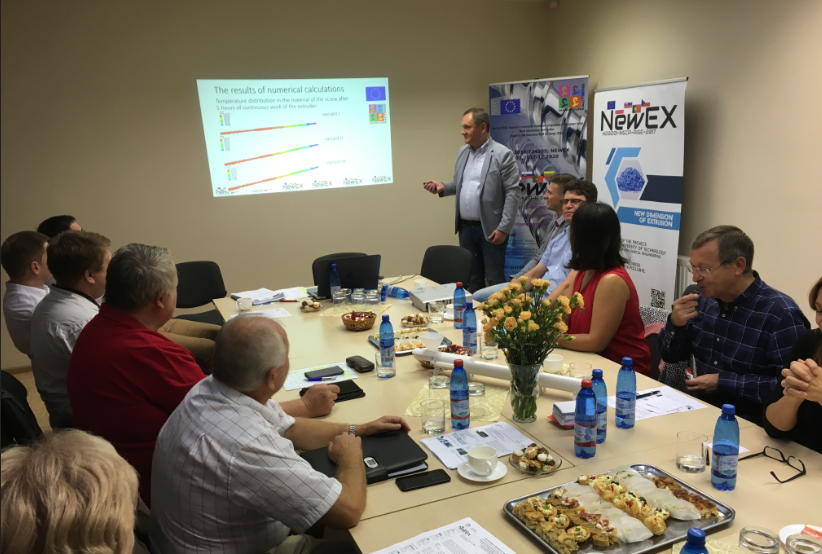At the training on September 5, 2018 at the UAB Dirmeta company in Kaunas, Lithuania, prof. Janusz Sikora presented models of screws that were developed after brainstorming on August 6, 2018, discussions and consultations conducted by members of research teams from LUT, TUK, UMI and DIR.
Eight models of screws were presented, with different geometrical features, structurally adapted to the previously selected geometry of the rotational barrel segment. Numerical calculations have been started for selected models.Preliminary results of calculations using the finite element method (FEM) on the cases of screws loaded with the torque, pressure and temperature were presented by Hubert Debski and Paweł Wysmulski from LUT. The assumptions for the calculation of polymer flow in selected screws were briefly presented by Antonio Gaspar Cunha from UMI. After a short discussion and directions for further action, Aurimas Valečka from DIR led the “Survival Lithuanian” course. The aim of the course was to get the Secondees acquainted with a very basic knowledge of Lithuanian that would help them to “survive” in Lithuania. In this intensive course the Secondees learned to introduce themselves, to provide basic biographical information, to ask for the prices while shopping, to ask for directions, basic information at the university, to order food, as well as other useful everyday phrases in Lithuanian. This intensive course was structured around the sociocultural knowledge of Lithuanian language, history, traditions and evolution. In the second part of the day the Workshop on design and manufacturing of machine parts took place and was led by Povilas Padleckas, the CEO of Dirmeta with the support of the employees from different departments. The workshop was designed to support our knowledge by providing demonstrations of machining, cutting, milling, drilling, turning and other manufacturing processes. The workshop also showed the process of heat treatment of the shaft, sandblasting process for small parts and the process of electro-erosion using an electrode in the form of a moving wire.

